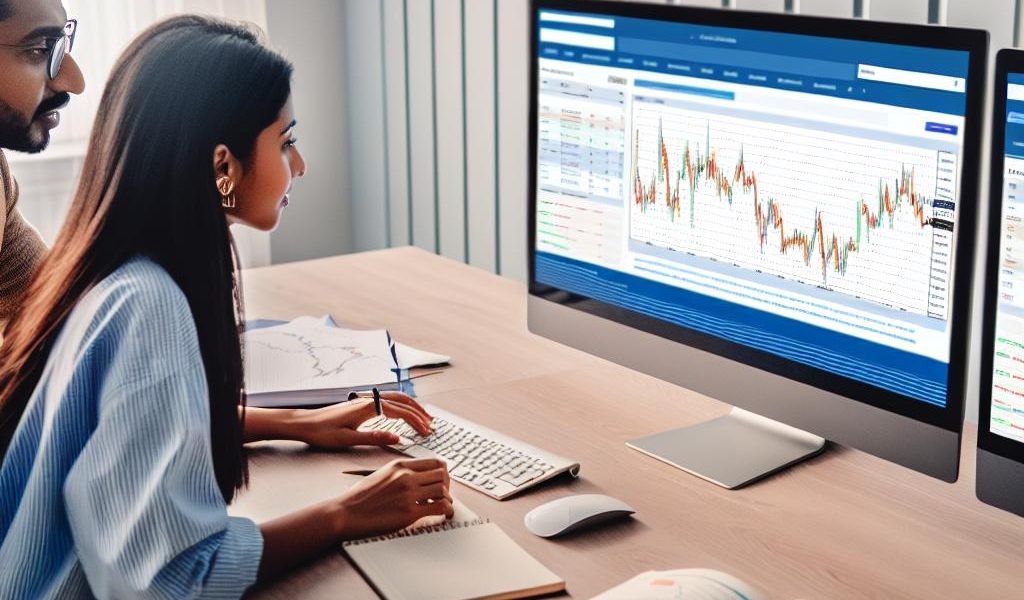
How to open a cfd trading account?
admin - April 2, 2025Understanding CFD Trading
Contract for Difference (CFD) trading has established itself as a cornerstone in the realm of investment strategies, offering investors a unique opportunity to engage with global financial markets. With CFDs, traders can speculate on both rising and falling prices across a multitude of market categories, including shares, indices, commodities, currencies, and treasuries—all without the need to purchase or own the underlying assets. This approach has democratized access to financial markets, allowing for a breadth of strategies and flexibility in trading.
Research and Choose a Broker
The journey into CFD trading commences with a vital step: selecting a trustworthy broker. The right broker will not only facilitate your trades but also ensure the safety and integrity of your trading activities. It’s crucial to consider several pivotal factors when evaluating potential brokers, as this selection can significantly impact your trading experience.
To make an informed decision, start by evaluating the broker’s regulatory compliance. Regulatory bodies such as the Financial Conduct Authority (FCA) and Commodity Futures Trading Commission (CFTC) offer oversight that ensures brokers adhere to industry standards. Ensuring your broker is regulated by a reputable authority provides an additional layer of security for your funds.
Regulation and Compliance
Regulatory oversight is vital to maintaining a secure trading environment. It fosters transparency and ensures that brokers are operating under established industry standards, thereby safeguarding your investment. When choosing a broker, prioritize those under the jurisdiction of esteemed regulatory bodies. This choice can mitigate potential risks and offer peace of mind as you venture into CFD trading.
Understanding Fees and Spreads
CFD brokers earn primarily through spreads and various fees. Understanding these costs is crucial to managing your trading expenses and making informed decisions. Spread costs serve as the difference between the asking price and the bid price, directly impacting your trading costs. Additionally, consider potential overnight fees for holding positions and any fees associated with withdrawing funds. Opting for a broker with smaller spreads can create a more cost-effective trading environment, enabling efficient transaction execution.
Opening a CFD Trading Account
Having identified and evaluated an appropriate broker, the next step is opening a CFD trading account. The account setup process is structured yet straightforward, typically encompassing several key stages.
Step 1: Registration
To get started, navigate to your broker’s website and locate the option to open a new account. Registration requires basic personal information, such as your name, email address, and phone number. This initial step sets the foundation for your trading journey, enabling communication and account management.
Step 2: Complete the Application
The subsequent step involves completing a comprehensive online application form. This form captures detailed personal information, including financial status, trading experience, and knowledge about different markets. These details allow the broker to assess your understanding of trading risks and suitability for CFD trading.
Verification Process
A critical component of the application process is verifying your identity and address, which may entail submitting documentation like a passport or driver’s license for identity verification and a utility bill or bank statement for address confirmation. This verification ensures compliance with legal standards and protects against identity fraud.
Step 3: Deposit Funds
Once your account is approved and authenticated, you can proceed to fund it. Most brokers offer diverse deposit methods, including bank transfers, credit or debit cards, and electronic wallets. Understanding the minimum deposit requirements and any associated fees is essential to ensure your initial transaction aligns with your trading budget.
Leverage Considerations
A distinctive feature of CFD trading is the ability to trade on margin, using leverage to open larger positions than your account balance might otherwise allow. While leverage can enhance potential profits, it equally amplifies potential losses. Recognizing the risks associated with leverage and implementing proper risk management strategies is fundamental to sustainable trading.
Start Trading
After successfully depositing funds, you’re set to initiate trading. It’s advisable to thoroughly familiarize yourself with the trading platform and any tools offered by your broker. Many brokers provide educational resources and demo accounts, allowing you to practice and refine your skills without financial risk before venturing into live markets.
Moreover, getting acquainted with platform-specific features such as charting tools, order execution mechanisms, and risk management options can increase efficiency and confidence as you begin trading. This foundational knowledge can serve as a buffer against hasty decisions driven by emotion rather than strategy.
Final Thoughts
Engaging in CFD trading is accompanied by considerable risks, especially when leveraging capital. The myriad of strategies available necessitates a comprehensive understanding of the markets and responsible trading practices. Implementing robust risk management tools and continuously expanding your market knowledge are integral to successfully navigating this aggressive yet rewarding trading environment.
While ambitious trades may promise substantial returns, it’s prudent to align your risks with your financial capacities and risk tolerance. A methodical approach can mitigate potential losses and establish a sustainable trading path.
Overall, remaining cognizant of the fluctuating market dynamics and consistently refining your strategies will equip you to make informed decisions, ensuring measured and strategic progress in the realm of CFD trading. For those aspiring to enhance their trading prowess further, comprehensive education, guided exploration, and insightful resources such as those found on Pro-Paul.net may offer critical support and direction.
This article was last updated on: April 2, 2025
